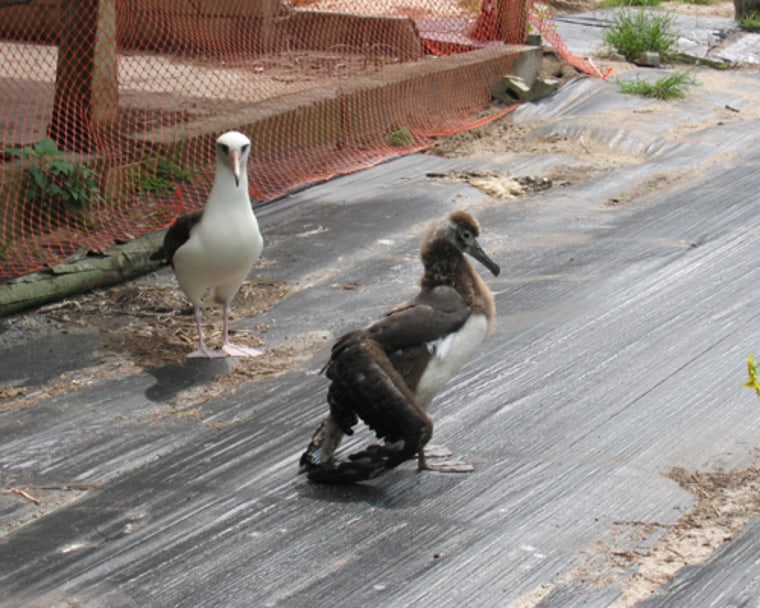Citing a study that lead-based paint kills up to 10,000 albatross chicks each year on an atoll near Hawaii, an environmental group on Monday said it had filed a notice of intent to sue the U.S. Fish and Wildlife Service to clean up the contaminants.
"For too long the Fish and Wildlife Service has stood by while thousands of albatross chicks die needlessly every year," Shaye Wolf, a biologist with the Center for Biological Diversity, said in a statement. "If they don’t take action to stop this problem, we will."
The paint is on buildings at a former U.S. Navy base on the Midway Atoll, which is part of the Papahanaumokuakea Marine National Monument.
The center cited a study published last October in the journal Animal Conservation that found that lead poisoning at Midway is killing up to 10,000 Laysan albatross chicks a year, affecting the long-term survival of the species.
"It is heart-wrenching to see this problem persist for so many years,” Myra Finkelstein, the study's lead author and a toxicologist at the University of California, Santa Cruz, said in the statement. "These magnificent birds sometimes experience horrific effects from lead poisoning for months before they finally die."
One very visible symptom, called "droopwing," is the inability of a chick to lift its wings due to lead's toxic impact on the nervous system.
Those chicks are unable to fly and eventually die, often from starvation.
The center alleges that the toxic threat violates the Migratory Bird Treaty Act, Endangered Species Act and Resource Conservation and Recovery Act.
The Laysan albatross is listed as a "vulnerable" species by the International Union for the Conservation of Nature.
Midway, the site of the famous World War II battle by that name, happens to be the most important breeding site for the Laysan albatross, the center said.
"When the Fish and Wildlife Service took over responsibility for Midway in 1996, it stopped maintaining most of the 95 military buildings that are coated with layers of lead-based paint," the center stated. "These deteriorating structures are shedding toxic lead-paint chips that are then eaten by albatross chicks."
"Lead contamination also poses a threat to other Midway wildlife," the center added, "including the highly endangered Laysan duck and 17 other species of seabirds."
Fish and Wildlife has been spent $1.5 million on lead-paint cleanup at Midway since 2005, according to John Klavitter, deputy refuge manager and a co-author of the study.
But he noted that limited funds means only 10 buildings a year can be cleaned up. Some $4.1 million is needed to treat the remaining structures, and that does not include cleaning up the sand where paint chips accumulate, Klavitter said.
